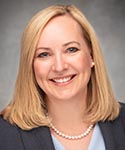Five Steps for Creating a Financial Plan
Heather Smith, NCTM
MTNA Business Digest, Volume 3, Issue 3
April 2024
Creating a financial plan is a crucial aspect of managing your money effectively, regardless of your age or career stage as a music teacher. Certain principles remain relevant for all teachers.
1. Set Clear Financial Goals
The first step in creating a financial plan is setting clear financial goals. These can range from building an emergency fund and paying off high-interest debt, to saving for your children’s education and for retirement. By categorizing your goals based on their time horizon, such as short-term (less than 12 months), medium (2–4 years) and long-term (5+ years), you can prioritize and strategize effectively. It is also important to regularly check in on your progress to make any necessary adjustments to your goals.
To assist you in planning for your short, medium and long-term goals, here is a worksheet from Regions Bank that will calculate how much money you will need each month.
2. Manage Irregular Cash Flow
As a music teacher, you may experience irregular cash flow, which can make budgeting challenging. However, there are strategies you can use to navigate this, such as building cash reserves and consistently setting aside a percentage of your income for savings each month (Sofi, n.d.). For example, during the summer months, my teaching income is typically half of what it is during the school year. To ensure a steady income year-round, I set aside a portion of my income each month during the school year. This disciplined approach allows me to pay myself a regular income even when teaching is slower. By implementing these tips, you can gain control over your finances and foster peace of mind.
3. Create a Budget
Creating a budget is an important step in establishing a baseline for your financial growth. By assessing your income, expenses, assets and liabilities, you can gain a clear understanding of your current financial situation and identify areas where adjustments and behavioral changes can be made to reduce debt and enhance savings. This will improve your overall financial health and give you more freedom in the long run (Ramsay Solutions n.d.).
When creating a budget, utilizing apps can be a helpful tool to track expenses and manage finances efficiently. I personally use Dave Ramsey’s EveryDollar app, which offers a user-friendly interface for budgeting purposes. However, there are various budgeting apps available, so choose one that aligns with your financial goals and preferences.
4. Pay Off High-Interest Debt
Paying off high-interest debt is another important aspect of financial planning. Whether you use the avalanche or snowball approach, or consider debt consolidation, systematically paying off debts can help you regain financial control and reduce financial burdens.
5. Savings and Investing
Finally, establishing an emergency fund and investing in your future are essential components of a comprehensive financial plan. The emergency fund should start with as little as $1,000 but eventually grow to the point that it can cover 3–6 months of your basic living expenses, should an injury or other emergency occur.
A few years ago, my husband experienced a motorcycle accident that rendered him unable to work for four months. This unexpected turn of events could have been financially devastating, but, fortunately, we had the foresight to establish an emergency fund. This fund became our lifeline, providing the financial stability needed to navigate through this difficult period without compromising our long-term financial goals.
By setting aside money for unexpected expenses and long-term goals like retirement or education, you can ensure financial security and peace of mind for your future.

Heather Smith, MM, MBA, NCTM, is the MTNA Secretary-Treasurer and serves on the Foundation Fund Development Committee and the Business Network. She is the director of development and advancement for the Frances Clark Center.